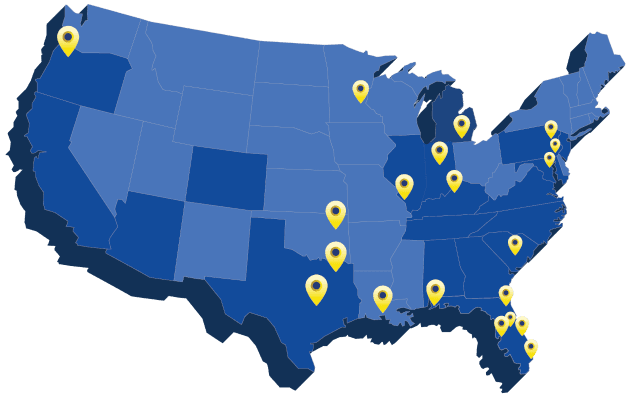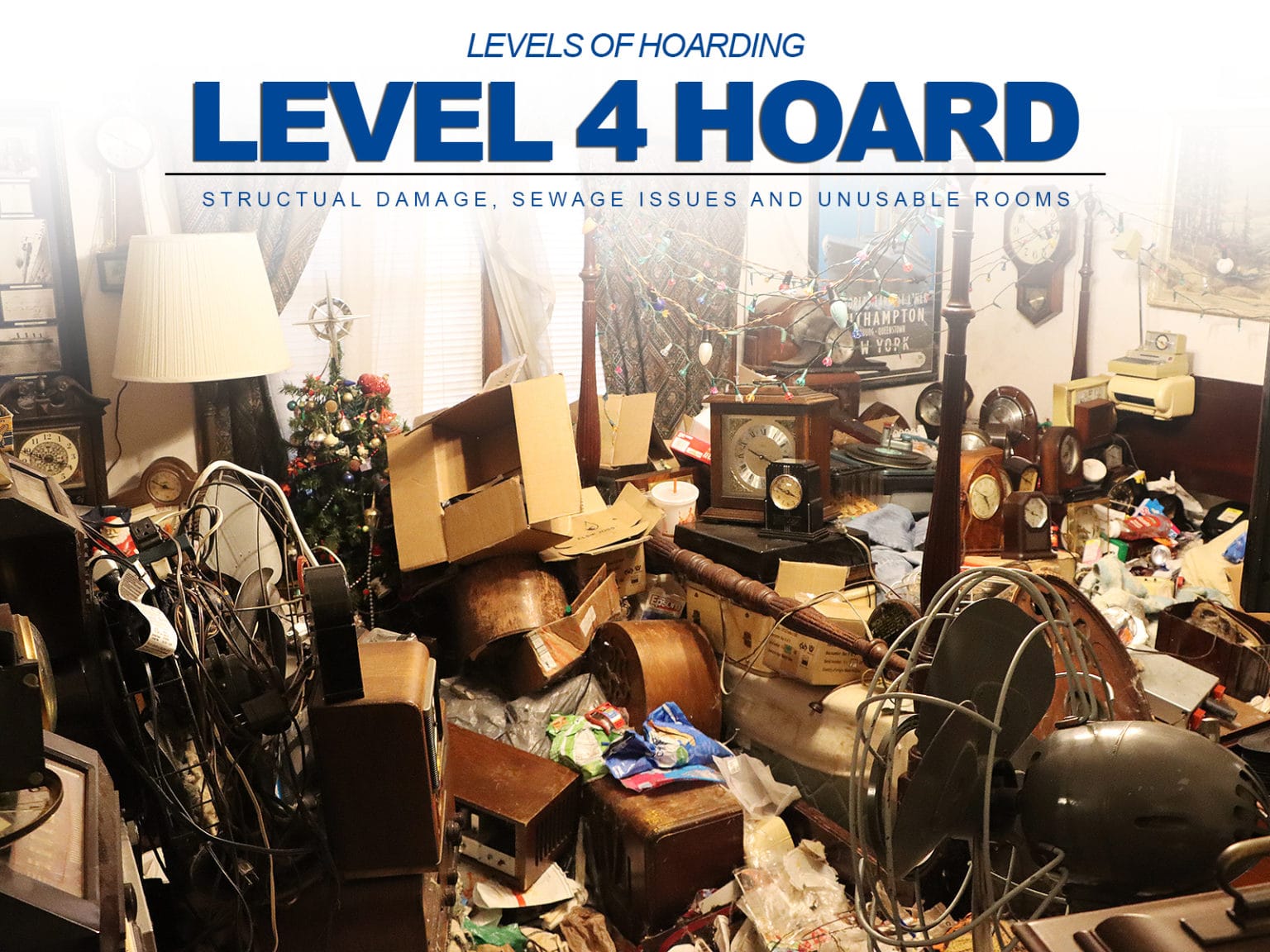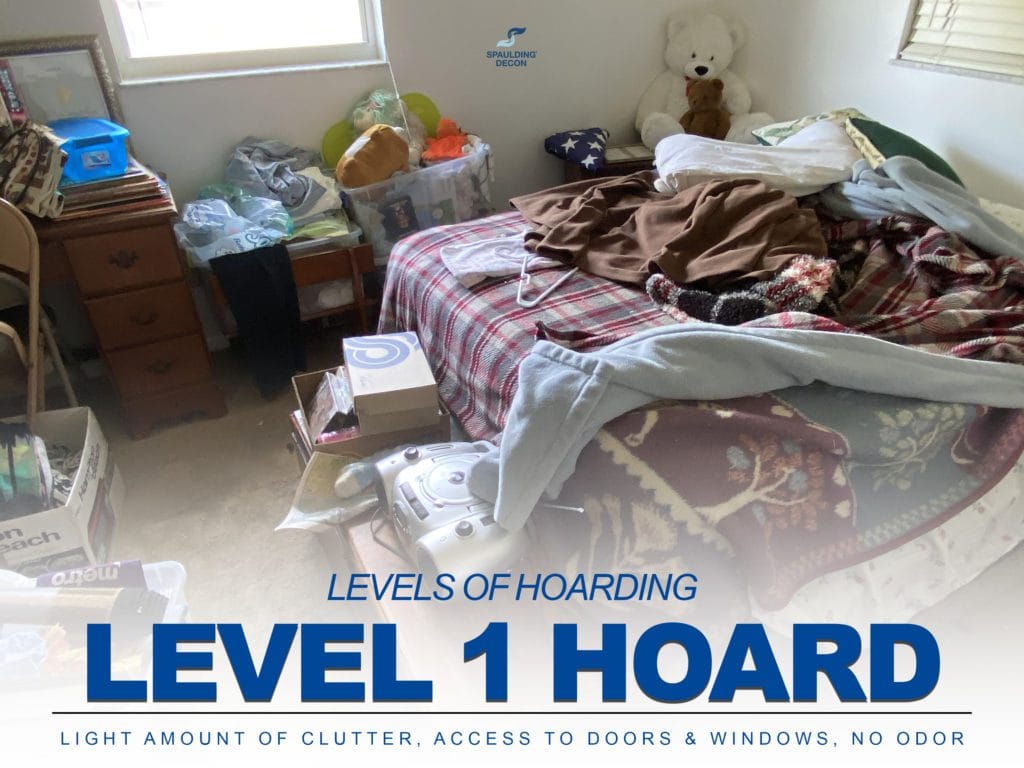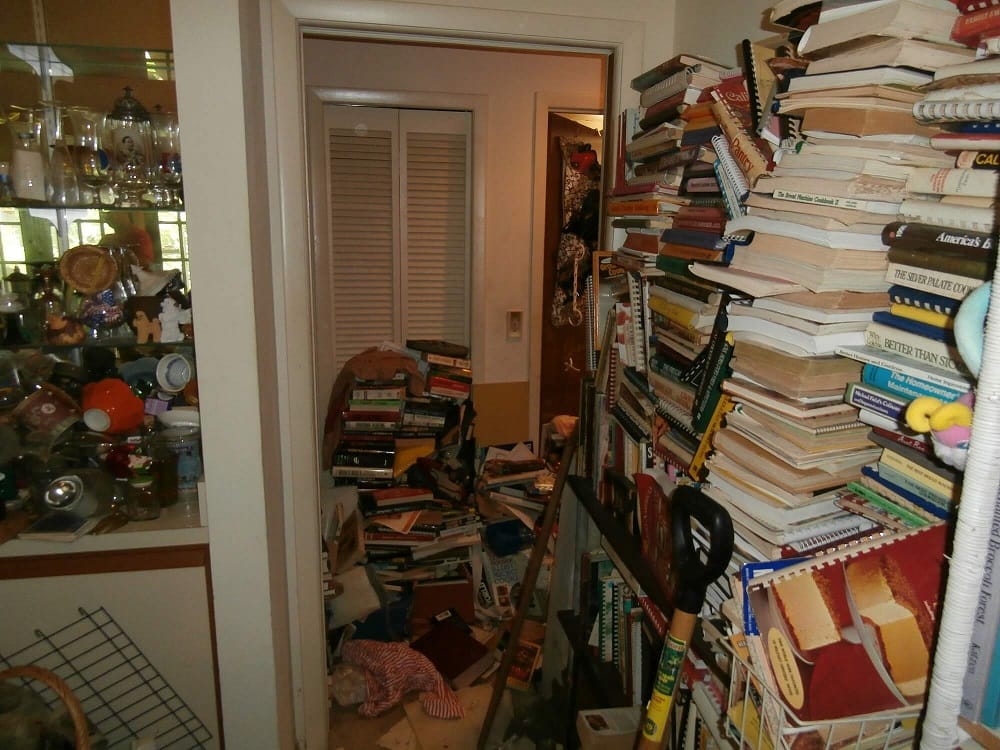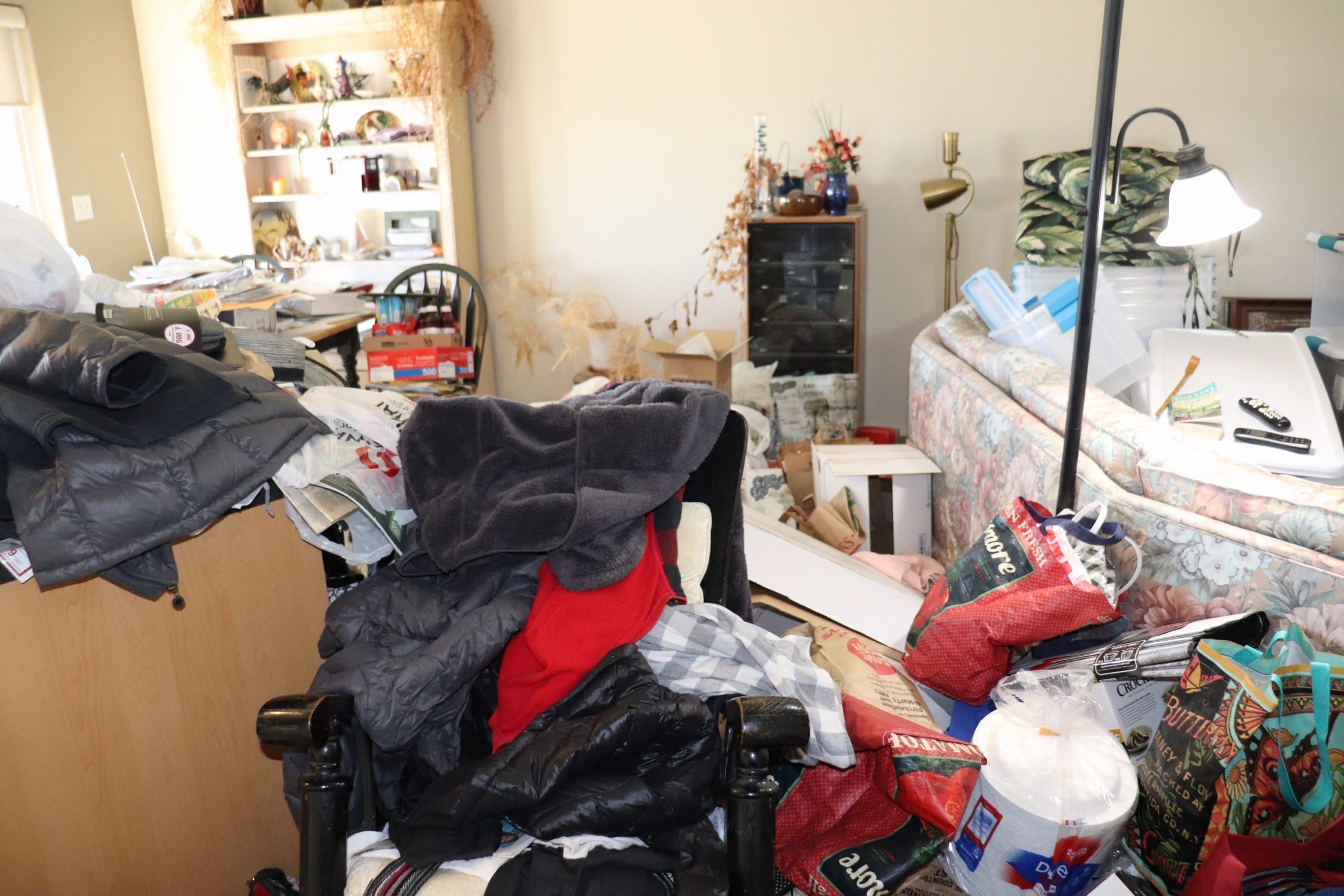How to know if your Hoarding Situation has reached Level 4
Hoarding disorder is a complex mental health condition that progressively worsens over time. The Clutter-Hoarding Scale, developed by the National Study on Compulsive Disorganization, categorizes hoarding into five levels based on severity. This scale helps those in the periphery of the hoarder’s life to step in, recognize the severity of the hoarding disorder, and seek the appropriate help for the person who is hoarding.
Stage 4 Hoarding is the second most severe level of hoarding, characterized by multiple unusable rooms, structural damage, blocked exits, extreme sanitation issues, and hazardous infestations. Individuals at this stage often experience a mental health crisis, making them unable to recognize or address the dangerous and unsanitary conditions of their home.
Did you know? Studies suggest that hoarding behaviors are linked to anxiety, trauma, and depression, making early intervention crucial.
Hoarding level 4 behavior has the following characteristics:
If a home exhibits the following indicators, it may have progressed to Level 4 hoarding:
- Multiple Unusable Rooms
- Multiple Exits are Blocked
- Sewage Issues
- The Hoarder Has Not Bathed in Weeks
- An Overpowering Odor
- Large Quantities of Mold and Mildew Throughout the Home
- Structural Damage to the Hoarder House that is At Least 6 Years Old
- A Large Quantity of Rotting Food in the Kitchen and Refrigerator
- Bed Bugs, Lice, Fleas, Cockroaches, and Rodent Infestations
- Excessive and Aging Animal Waste
Warning: Level 4 hoarding poses serious health risks and structural hazards. Professional intervention is strongly advised.
Key Indicators of Level 4 Hoarding
Multiple Unusable Rooms
Multiple rooms are so full in a stage 4 hoarding situation that they are completely unusable. Hallways and doorways are inaccessible due to the height and breadth of the hoard because the encroaching clutter has overtaken liminal spaces like staircases.
Quick Tip: If entire rooms cannot be used for their intended purpose, it’s time to seek professional cleanup assistance.
Multiple Exits are Blocked
More than one major exit into and out of the hoarder house is blocked by items. The state of their hoarded home now poses a real danger in the face of a fire or an emergency that requires getting out of the house quickly. Pathways exist between towering levels of clutter. It is impossible for the hoarder to move through their home quickly due to the excessive amount of items they have collected.
Warning: Blocked exits are life-threatening and should be cleared immediately.
Sewage & Plumbing Issues
- Toilets no longer flush due to blockages.
- Sinks and bathtubs are nonfunctional.
- Hoarders may resort to alternative hygiene methods like using buckets outdoors.
- Water damage leads to mold growth and weakened structures.
Bathrooms have become unusable in the hoarder’s home. The toilet no longer flushes, and sinks are often backed up to the point that they are not functioning. These items have been neglected because they are too hard to reach through the hoard that exists on the floors, around the toilet, in the tub, and on all other surfaces available.
The bathtub is usually so full of objects it is not used. Pipes and other plumbing in disrepair may be causing water damage. While the water may not have been shut off yet, the running water situation within the hoarder house is already compromised.
Quick Tip: When sewage issues arise, cleanup requires biohazard remediation experts to restore sanitary conditions.
Severe Personal Hygiene Decline: The Hoarder Has Not Bathed in Weeks
Due to sewage issues, nonfunctioning bathroom fixtures, and/or a lack of space, the hoarder cannot maintain their hygiene. Their clothes will be soiled, and areas designed for bathing within the home are too full to use. At this point, the hoarder usually develops strange bathing habits like using a bucket in the backyard to avoid defunct bathrooms.
Quick Tip: Encourage medical and mental health support along with a cleanup plan.
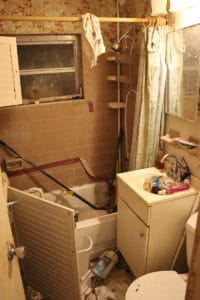
An Overpowering Odor
This odor usually permeates the entire property and becomes surprisingly stronger when someone enters the hoarder’s house. Once inside, the hoard has many displeasing odors. This is usually caused by urine, feces, and rotten food.
Warning: These odors often indicate severe biohazard risks and airborne contaminants.
Large Quantities of Mold and Mildew Throughout the Home
There’s irreversible damage occurring from mold and mildew. The quantities of mold in the house make it unsafe to enter without PPE (Personal Protective Equipment) since mold spores can make you sick. No amount of cleaning will lift off certain mildew stains in a hoarded bathroom or kitchen.
Mold and mildew exist near water damage, on windowsills, and other portions of the hoarded house. If the house is in a humid area, the mildew and mold will be on objects throughout the hoard. It may be contributing to structural damage by weakening things like beams and roofing.
Health Risk: Mold exposure can cause asthma attacks, skin irritation, and lung infections. Proper remediation is required.
Structural Damage to the Hoarded House that is At Least 6 Months Old
Hoarding at this level results in severe property damage, including:
- Collapsing floors due to excess weight from clutter
- Broken windows and compromised walls
- Leaking roofs and moisture damage
There is structural damage that threatens the viability of the hoarded home, and that damage has existed for more than six months. Windows may be broken, floorboards are rotting, the roof is leaking, or walls could be crumbling. Moisture, mold, and the weight of the hoard will be contributing to this structural damage.
The house can still be salvaged once a thorough decluttering and sanitization have taken place. However, the damage will be extensive, and some areas of the home may not be repairable.
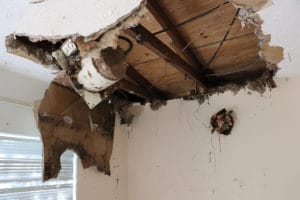
Quick Tip: Some structural damage may be irreparable, but professional cleanup and property restoration services can help mitigate further deterioration. Spaulding Decon provides fire damage restoration, water damage cleanup, and full property restoration to return homes to a livable condition.
A Large Quantity of Rotting Food in the Kitchen and Refrigerator
Fresh foods are rotting in various places around the hoarded home, and there is an excessive amount of expired canned and bottled food stored around the house. There are no dishes or silverware that are clean, and most that are not buried under clutter have spoiled food on them.
Warning: Rotten food attracts pests and bacterial infections, posing serious health risks.
Bed Bugs, Lice, Fleas, Cockroaches, and Rodent Infestations
At Level 4, hoarders often experience severe pest infestations, including:
- Bed bugs, lice, and fleas in furniture and bedding
- Cockroaches and ants in kitchens and storage areas
- Rodents chewing through belongings and electrical wiring
All the furniture and beds in the house have lice or bedbug infestations. Rodents have chewed on objects around the house and cockroaches are easily seen throughout the hoard. There may be bats living in the attic and spider webs are spread across most objects and walls.
The infestations are so bad that most of the items that may have been valuable are now worthless because they are soiled. Some hoarders, when confronted with the level of pest infestation in their home, start to realize how dirty the things they are trying to keep really are.
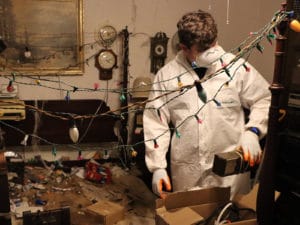
Quick Tip: Professional extermination and deep cleaning are necessary to prevent further infestation.
Excessive and Aging Animal Waste
Animal hoarding may be present, leading to:
- Feces and urine buildup inside the home
- Malnourished or sick animals due to overcrowding
- Excessive pet dander, worsening allergies and respiratory problems
The hoarder may have also hoarded animals on their property. A stage 4 hoarder usually has more animals than allowed by local regulations. There are at least 3 spots of excessive animal waste accumulation. This failure to dispose of excrement properly has created unsanitary conditions for the animals, and the hoarded pets are often ill.
Warning: Severe animal neglect may violate local regulations and require intervention from animal welfare authorities.
How to Help a Level 4 Hoarder
Cleaning up a stage 4 hoarding situation will need PPE and a group of trained professionals that specialize in helping hoarders and cleaning up hoarded spaces. When you have recognized the above signs and symptoms in your loved ones hoarded home, it is time to seek help.
Steps to Take:
- Speak with compassion – Avoid judgment and accusations.
- Encourage small changes – Cleaning an entire home at once can feel overwhelming.
- Consult mental health professionals – Hoarding is often tied to anxiety and trauma.
- Hire a hoarding cleanup service – Trained specialists ensure a safe and effective cleanup process.
Why Choose Spaulding Decon for Hoarding Cleanup?
- Compassionate & Discreet Services – No judgment, just solutions.
- Biohazard Cleanup & Odor Removal – We handle waste, mold, and sanitation issues.
- Customized Cleaning & Property Restoration Plans – We specialize in restoring homes after hoarding situations, fire damage, water damage, and structural restoration.
At Spaulding Decon, our trained biohazard remediation professionals know how to clean up a hoarder’s home and we understand the emotional attachment that exists to the belongings.
Our teams can create custom cleanup plans while working with mental health professionals to ensure that your loved ones get the help and support they need during the difficult cleanup process.
Need Urgent Assistance? Call 866-726-2316 for Immediate Help.
To find a Spaulding Decon team nearest to your location: Spaulding Decon Locations | Professional Cleanup Company
Take Action Before It Escalates to Level 5 Hoarding
Don’t wait for Level 4 hoarding to worsen. The next stage – Level 5 Hoarding. Level 5 hoarding means complete home unlivability, extreme biohazards and irreversible structural damage. Learn what happens when hoarding reaches its final stage in our Level 5 Hoarding Guide →.
Call Spaulding Decon today at 866-726-2316 for expert hoarding cleanup.
Find a Hoarding Cleanup team nearest you: Spaulding Decon Locations
